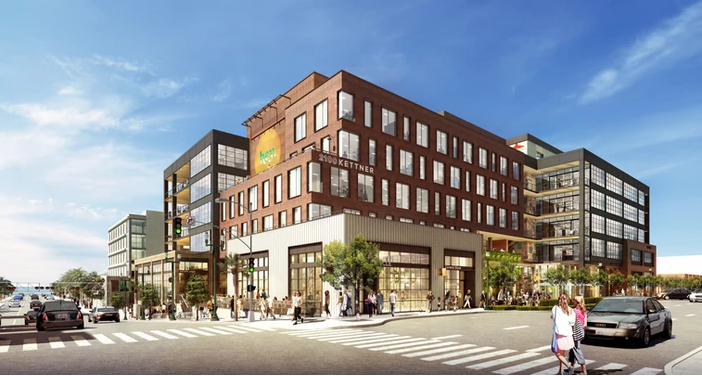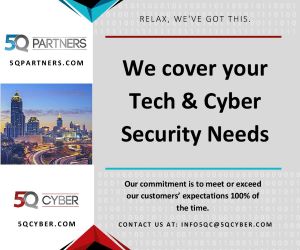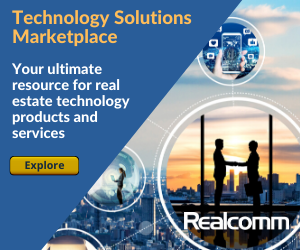Kilroy Realty Corporation: Health and Sustainability During COVID-19

Healthy buildings are a key component of many commercial real estate sustainability programs, which seek to bridge smart buildings and human health while still minimizing their environmental footprints. A focus on health is important because clear scientific research indicates that the buildings we occupy shape our productivity and health outcomes. Unsurprisingly, what has changed in recent months is the focus on buildings as a potential environment to either aggravate or mitigate viral transmission, especially COVID-19.
Companies with strong health programs, like Kilroy Realty Corporation (KRC), have been able to quickly pivot to focus on viral safety because air quality and active design, and important mitigation measures were already priorities. Our industry now sees health as integral to the success of any sustainability program, and this work is critical as we strive to minimize the possibility of viral transmission and prepare for future full reoccupancy of our workplaces.
Partnerships for success
Fortunately, there are many resources from which sustainability professionals can draw to enhance their health programs. NAREIT is a strong peer group sharing best practices and new findings, as is ULI Greenprint and the Real Estate Roundtable. I appreciate that our peer group is committed to helping one another find the best health solutions, and while I know that we are competitors, our goals are the same: We want people to feel safe when they are ready to come back to the office.
Partnerships are also critical for third-party verification. KRC has a long history of using third-party verification for everything from LEED buildings and green bonds to the Annual Sustainability Report to ensure we are maintaining the highest standards in health and sustainability. Our third party-verified health programs include WELL and Fitwel certifications, active design building enhancements and indoor air quality testing. All of these were in place prior to COVID-19, which helped us quickly modify our health programs to focus on viral transmission mitigation. This is because many of the existing health certifications we were already using have viral transmission mitigation components. For example, active design measures such as open stairwells, which are incentivized in building health certifications because they enhance occupant fitness opportunities, have the impact of reducing crowding in elevators, which helps mitigate viral transmission.
Our COVID-19 response has required additional partnerships. Along with other industry peers, KRC chose to partner with Underwriters Laboratories (UL), the largest not-for-profit testing laboratory in the world. UL offers a Pandemic Advisory Services and Building Evaluation product, and we partnered with them to extend this program to our portfolio. This involved an evaluation of our existing operations programs, including engineering, janitorial and asset management as well as onsite health testing of our assets.
A focus on indoor air quality
Our focus on indoor air quality began with LEED certification, developed by the U.S. Green Building Council. LEED certification has always included an indoor environmental quality component, which has encouraged developers to understand ventilation and air quality in their spaces. Now, CDC guidelines recommend more ventilation than found in the average building, and our industry is responding. Because we have been developing LEED buildings with increased outside air for a long time, we have been able to navigate the new CDC guidelines without dramatically increasing our energy spend.
Air sensors also support building owner’s understanding of their indoor air quality. Last year, we were excited to participate in the third cognitive effects study conducted by the Harvard TH Chan School of Public Health, whose goal is to study the impacts of buildings on a number of human health outcomes including productivity, physical activity and immune response. We deployed air quality sensors on participants’ desks and the research team used this data, along with cognitive function and health indicators, in the study.
New developments
We are excited to extend our viral transmission mitigation work to our development pipeline. Our initial focus has been our 2100 Kettner project in San Diego. 2100 Kettner is a 200,000 square-foot office project, and we have made significant enhancements to the project with the goal of developing California’s smartest building focused on viral transmission mitigation. These enhancements include advanced air cleaning, touchless technology, and air sensors. We had UL examine our proposed upgrades to help us select those that would be most effective. We are now extending this learning to other projects in our development pipeline, which will also be at the forefront of strategic pandemic response.
Environmental opportunities
While COVID-19 is our primary focus right now, I am relieved and energized to see that real estate companies are not losing sight of their environmental goals. It is true that it will be a difficult task to normalize energy and water consumption data from 2020 because of occupancy, but real estate owners are not losing sight of the big picture: It is still critical to reduce the environmental footprint of our buildings.
This is important because there are currently unique opportunities for energy and water efficiency. For example, we can conduct energy efficiency upgrades such as lighting retrofits and advanced window film installations without disturbing our tenants. Efficiency projects previously performed at night or on weekends can be done during the day. In addition, we have been able to separate building energy consumption from plug load, which has given us insight into how to optimize our HVAC for improved performance.
I believe the next sustainability opportunity for real estate will be leveraging our knowledge of smart buildings to enable the new flexible workforce. Our IT teams have been working incredibly hard to make remote work possible, and we are working together to create win-wins for IT and sustainability in this new normal. There are many possibilities: sophisticated occupancy sensors that can tune ventilation rates to specific rooms to optimize ventilation rates, free address systems that allow occupants to choose seats based on a variety of parameters including thermal comfort, or technologies not yet commercially available.
Ultimately, we know that any upgrades related to health and sustainability must enhance the lifetime value of our assets. As we quickly adapt to this rapidly changing business climate, we remain focused on ensuring that our buildings maximize occupant health while minimizing environmental footprint in a way that makes long-term sense for our portfolio.
This Week’s Sponsor
SkyFoundry’s software solutions help clients derive value from their investments in smart systems. Our SkySpark analytics platform automatically analyzes data from automation and control systems, metering systems, sensors and other smart devices to identify issues, patterns, deviations, faults and opportunities for operational improvements and cost reduction. SkySpark helps building owners and operators “find what matters” in the vast amount of data produced by today’s smart systems.
Read Next
 3/27/2025
3/27/2025
The Convergence of Edge Computing, Cloud, and AI in Building Automation and Smart Buildings In the built environment, we have seen the convergence of Operational Technology (OT) and Information Technology (IT), later expanding to include Workplace Technologies (WP).
 3/27/2025
3/27/2025
DC Power: A Holistic Approach to Energy Savings in Commercial Buildings In today's energy-conscious world, businesses constantly seek ways to reduce their carbon footprint and operational costs.
 3/13/2025
3/13/2025
How to Achieve Eco-Friendly Facility Management Commercial real estate operators and facility managers are focusing on sustainable practices to minimize environmental impact, create healthier workplaces, improve productivity and lower operational costs.
 1/23/2025
1/23/2025
When It Comes To Managing Properties’ Parking, Technology Is Key It’s easy for developers and real estate owners to think of parking as a necessary evil. They know they have to provide it (often, because it’s mandated by code), they understand that prospective tenants and buyers expect to be provided parking, but they haven’t figured out how to maximize its value.






.gif)






